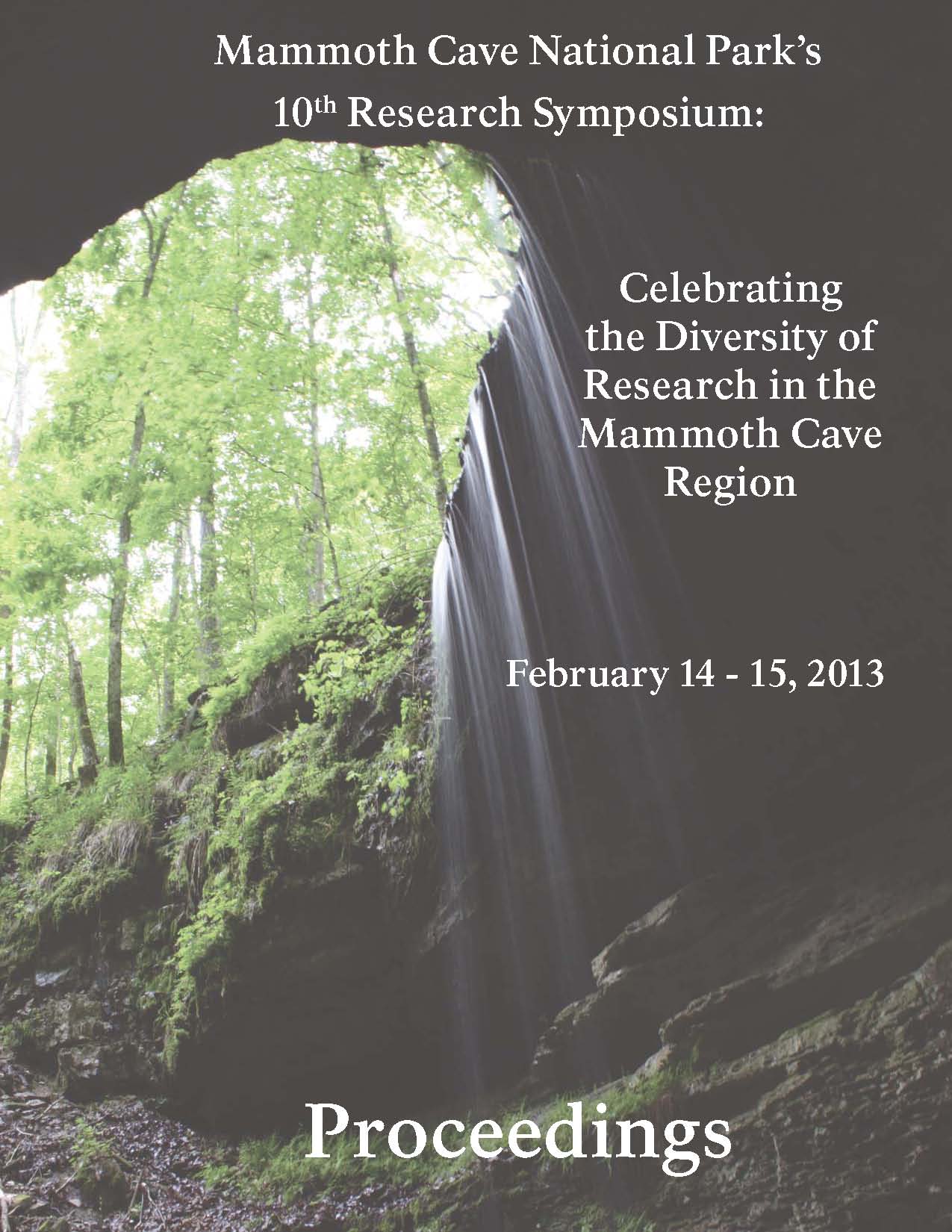Start Date
15-2-2013 2:50 PM
Description
Mammoth Cave guano deposits contain a rich record of troglofauna spanning the last 125,000 years. In particular, chiropteran remains from Chief City provide insight into ecosystem dynamics of the cave area during the last interglacial. This paper presents results of paleontological excavations undertaken in 2008.
Sub-fossil remains (N=1134) in Chief City guano deposits are dominated by chiropteran taxa. Although all identified taxa are extant, the combination of Myotis leibii and Tadarida brasiliensis is an association without modern analogue. Stable isotope analyses of guano indicate a C3 prey signature characteristic of forested habitat. This was unexpected given the prevalence of T. brasiliensis, a species that is typically associated with open environments.
Ecomorphological consideration of wing shape trends in these assemblages indicate that interglacial faunas are dominated by fast-flying, open-space taxa (T. brasiliensis) while late Holocene and Historic assemblages contain more taxa that utilized closed forest or forest gaps.
Recommended Citation
Widga, Chris and Colburn, Mona, "Paleontology and Paleoecology of Interglacial Guano Deposits in Mammoth Cave, KY" (2013). Mammoth Cave Research Symposia. 35.
https://digitalcommons.wku.edu/mc_reserch_symp/10th_Research_Symposium_2013/Research_Posters/35
Included in
Animal Sciences Commons, Forest Sciences Commons, Geology Commons, Hydrology Commons, Other Earth Sciences Commons, Plant Sciences Commons
Paleontology and Paleoecology of Interglacial Guano Deposits in Mammoth Cave, KY
Mammoth Cave guano deposits contain a rich record of troglofauna spanning the last 125,000 years. In particular, chiropteran remains from Chief City provide insight into ecosystem dynamics of the cave area during the last interglacial. This paper presents results of paleontological excavations undertaken in 2008.
Sub-fossil remains (N=1134) in Chief City guano deposits are dominated by chiropteran taxa. Although all identified taxa are extant, the combination of Myotis leibii and Tadarida brasiliensis is an association without modern analogue. Stable isotope analyses of guano indicate a C3 prey signature characteristic of forested habitat. This was unexpected given the prevalence of T. brasiliensis, a species that is typically associated with open environments.
Ecomorphological consideration of wing shape trends in these assemblages indicate that interglacial faunas are dominated by fast-flying, open-space taxa (T. brasiliensis) while late Holocene and Historic assemblages contain more taxa that utilized closed forest or forest gaps.


Comments
Abstract only